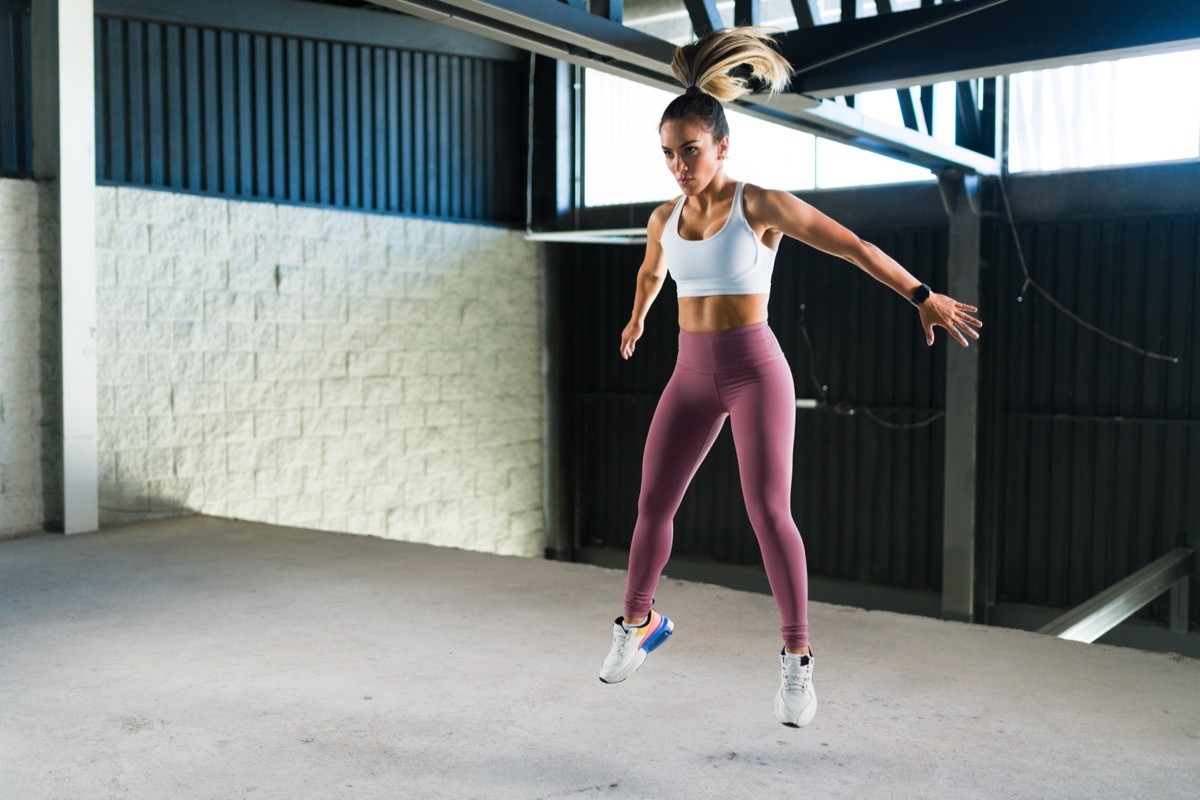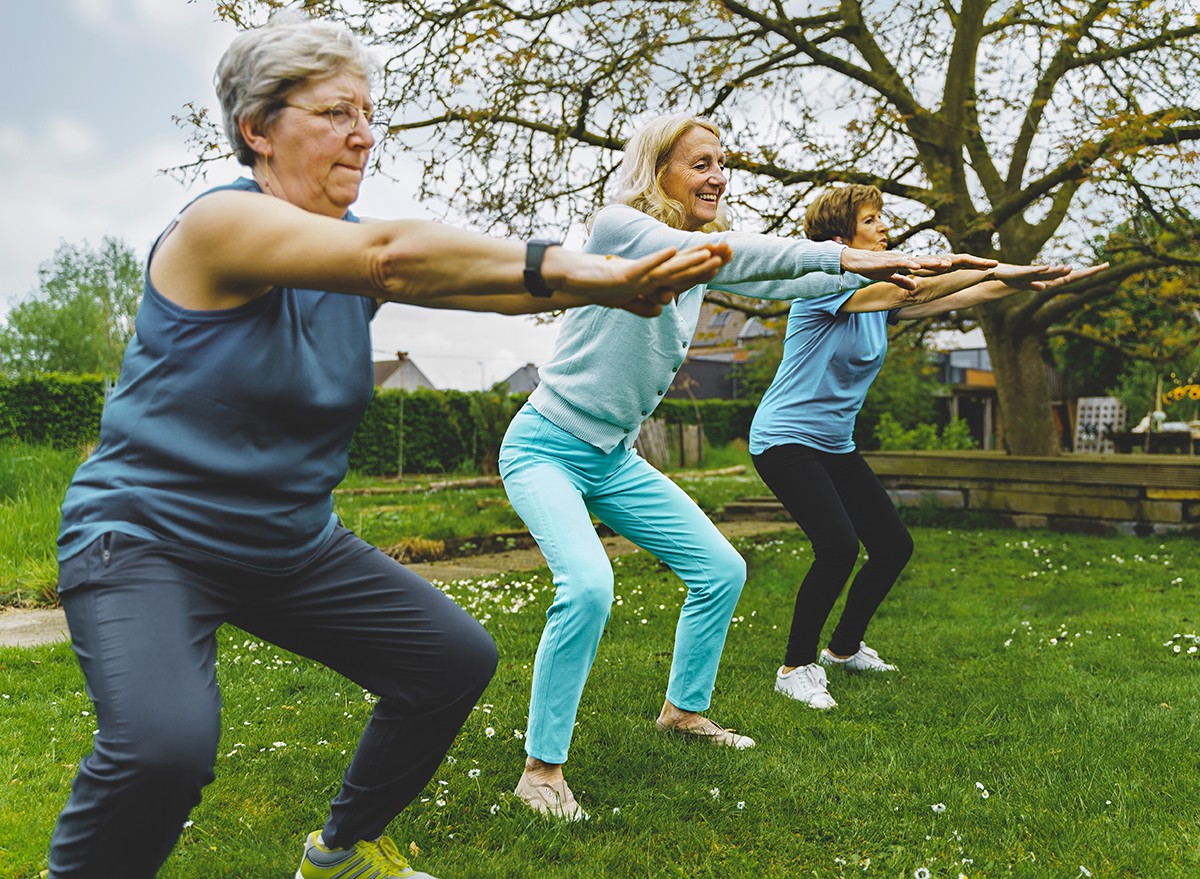The Simple 30-Minute Workout That’s Helping People Shed Pounds Fast

You don’t have to spend hours at the gym every day to lose weight and get fit. Just thirty minutes of exercise done consistently over time will give you amazing results. How? With HIIT workouts. “Interval training is the perfect workout for adults who want a faster, more effective way to stay fit and healthy,” says Harvard Health. “This form of exercise delivers results—sometimes even better results—in less time than traditional workouts. Adding just a few variable-intensity workouts to your regular exercise regimen can boost your fitness level faster and reverse more of the effects of aging on your body than if your entire workout is at the same intensity level.” Here’s why you should try it.
RELATED: 4 Best Ways to Lose Weight Without Medication.
70% Heart Rate

The purpose of HIIT is to mix higher-intensity bursts of aerobic exercise into your workout to burn calories and fat, build muscle, and improve overall health. “To get a bit more specific, high-intensity exercise typically means upping your heart rate to more than 70% of your maximum heart. The basic formula for calculating maximum heart rate is 220 minus your age,” says the Cleveland Clinic.
What Exercises Can I Do?

You can do practically any kind of exercise as part of your HIIT workout, including running, stair climbing, brisk walking, rowing, cycling, calisthenics, and more. “Think of it as a series of mini-challenges. Basically, you push harder for a short duration (20 seconds to a few minutes) before slowing down for an equal or slightly longer active recovery period,” says the Cleveland Clinic. “Repeat this back-and-forth process throughout the workout. A beneficial HIIT session can last as little as 10 minutes, plus time for a warmup and cool down. Twenty to 30 minutes is typical. Rarely do HIIT workouts extend beyond an hour.”
Burning Calories At Rest

The benefits of HIIT continue long after your workout is over. “Research also shows that interval training like HIIT is best for fat loss. HIIT training not only increases your metabolism during the workout, but it stays elevated after the workout is complete, meaning your body is burning more calories at rest,” certified personal trainer, yoga and Pilates instructor, and weight loss coach Stephanie Mansour tells TODAY.
RELATED: Interval Training Can Kick-Start Your Weight Loss.
Yes, It Can Be Low-Impact

High intensity doesn’t have to mean high impact. “If you suffer from joint issues or pain, you should incorporate low impact, but high intensity, exercises like speed squats, mountain climbers and marching in place,” Mansour says. “If you have no joint issues or pain, you are safe to experiment with higher-impact exercises like high knees, jumping jacks and burpees. As always you should consult your doctor before starting any exercise program.”
Don’t Overdo It

HIIT workouts can be dangerous if not approached properly, so start slow and build up endurance. “However, the biggest danger to health is an inactive lifestyle, which is much more widespread than overdoing exercise,” says UC Davis Health. “The goal should be to slowly overload the body for higher levels of performance, rather than to suddenly increase activity levels. While high-intensity exercise can lead to overuse injuries or muscle and joint injuries, these are less likely to occur with the right preparation.”